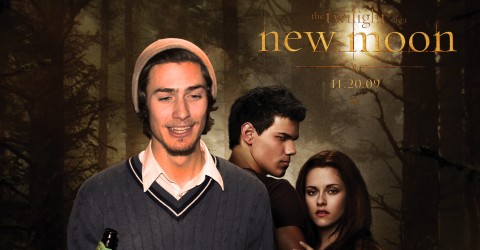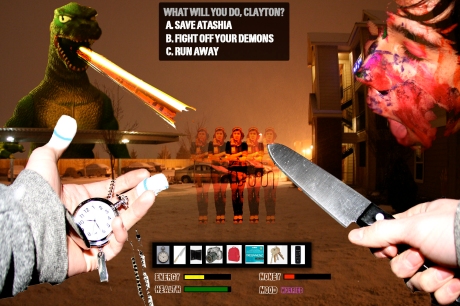Public Art Comes in All Ways, Shapes, and Sizes
Art has been displayed in public settings for thousands of years. From ancient Egypt until now, public art has been an asset to the culture of art. Public art in our culture has changed in a variety of ways and especially in the way in which it is displayed and its purpose. Now that technology is much more advanced than ancient Egypt, it is far easier to create large public art. There are many different ways in which large public art is created, and the motives behind artists’ work is also diverse. Four artists that are recognized worldwide for their large public artwork are Krzysztof Wodiczko, Christo and Jeanne-Claude (partners), and Jenny Holzer. Wodiczko, Christo and Jeanne-Claude, and Holzer all create large public art, but they use different types of technology and create their artwork for different purposes.
Krzysztof Wodiczko is a projection and electronic media artist born and raised in Warsaw, Poland. He studied art in Poland and graduated with a degree in industrial design. Wodiczko’s art utilizes his knowledge of building and architectural design because he uses video and slide projections against buildings and monuments. His work is politically driven and most of his work is controversial due to its content. Wodiczko uses his projections in a public setting as a way of trying to heal people that have been victims of traumatic experiences. It allows the victims to share their experiences with others that have endured similar incidents and gives them a chance to cope with their pain. For example, one of his most recent works, titled “Veterans’ Flame”, is a form of memorial that projects a flame on a brick wall of Fort Jay at Governor’s Island, New York City (Fort Jay has been in existence since the early 1800s and has held soldiers from past American wars). Along with the projection of the flame is an audio recording of Iraqi War Veterans telling their stories and reliving their experiences at war.
Krzysztof Wodiczko’s “Veterans’ Flame”
Christo and Jeanne-Claude are two European-born installation artists that have created massive sculptures around the world. Christo studied art in Bulgaria and Jeanne-Claude studied Latin and Philosophy at the University of Tunis. Their work is completely funded at their own expense, and the public works that they create are very expensive and time consuming projects. Their giant installations have been placed around the world and have used public buildings and places as their canvases. Some of their works have been controversial because of the amount of money, time, employment and space that they occupy. One of their most controversial works was “Running Fence”. This work was a 24 and 1/2 mile, 18 foot high fence that ran through the farmlands of a California city north of San Francisco. The work was controversial because it ran through the land of 59 ranchers, across 14 different roads, and a few hundred feet into the waters of the Pacific Ocean. The work took: “forty-two months of collaborative efforts, the ranchers’ participation, eighteen public hearings, three sessions at the Superior Courts of California, the drafting of a four-hundred and fifty page Environmental Impact Report and the temporary use of hills, the sky and the Ocean.”
Christo and Jeanne-Claude’s “Running Fence”
Jenny Holzer is an American conceptual artist that was born and raised in Gallipolis, Ohio. Holzer attended three different schools to obtain her education and has three doctorates from three different schools. Her artwork is unique in the sense that it is usually only text. Some of her work utilizes projection technology and is displayed in well-known, and heavily traveled areas; while other types of her work are LED sculpture displays, painted on walls, on condoms, and a variety of other public places and things. Holzer’s work is not intended to be beautiful and it can be argued either for or against in that area. Holzer’s works are usually controversial and that is her intention. She publicly raises questions that most people think about, but will never ask or discuss. Her work has evolved over the years, and in recent years, has moved from projections of her own words, to the words of authors and poets. A collection of her work that has sparked a lot of attention recently are the projections done in the streets of Chicago in 2008. This work focused on “war, survival, grief and loss” and was displayed over a span of six nights.
Jenny Holzer, Chicago Projections, 2008
These four artists mentioned above are contemporary artists that were born and raised in different countries, educated in a variety of institutions, and created their work for various reasons and to appeal to a variety of audiences. The differences start with the very basic motives that each artist has created their artwork. For example, Wodiczko created “Veterans’ Flame” not only as a sort of healing process for the veterans, but also as a way of conveying the difficulties of the war in Iraq to American citizens. Christo and Jean-Claude’s work “Running Fence” was created purely for the reasons of relationship and beauty. Wodiczko’s work is made with the intent to heal the victims in the audience (or participants in some cases), or to reveal the truth behind traumatic events such as war and rape, whereas Christo and Jeanne-Claude’s work was intended to show the relationship between the land and the man-made structure that was created as a compliment to the natural beauty of the land. Holzer’s work differs from both Wodiczko and Christo and Jeanne-Claude’s work because it was created to question the politics behind war, analyze the struggles of survival, and to learn ways of dealing with grief and loss. Another way in which the four artist’s works differ is the way in which their work is presented. Wodiczko’s work is projected onto carefully selected monuments and usually incorporates a real-life aspect of sound or image to help convey his motives. An example of this is his placement of the projection “Veterans’ Flame” in the desolate hallways of Fort Jay accompanied by the actual stories and voices of veterans. Christo and Jeanne-Claude’s works are primarily made by draping, hanging and/or constructing materials and fabric over carefully selected sites and pieces of land. “Running Fence” was specifically plotted out amongst the land and Christo made every sort of preparation possible to create this piece. Holzer’s work is projected or displayed using LED lights and it is always text; when the text is publicly displayed, the location is carefully chosen, but not necessarily for a particular reason. Holzer’s Chicago Projection exemplifies these practices because she used projectors that constantly scrolled text written by famous authors and poets. She selected different buildings around the city to display her artwork on, but for no specific reason other than their popularity. These differences are just a few that set these artists apart, but they also have a few similarities, as well.
There are similarities that can be seen through two of these artists, and there are also similarities that can be identified with all of them. There are some similarities that can be seen between Wodiczko and Christo and Jeanne-Claude’s works, but not many. One similarity between their work is the size of it. This is a given, but it should be recognized as important in the history of public art because they used this size as a way of questioning size versus content. And the other similarity between these artists’ work is that it brings people together to appreciate the work in their environment, not a gallery space. The only similarity between Christo and Jeanne-Claude and Holzer’s works are that they both large. Again, this is an obvious observation, but it is a relationship that most artists don’t share, and it just so happens that all four of these artist share this relationship. Wodiczko and Holzer have more in common than Christo and Jeanne-Claude did. Both of these artist utilize contemporary technology, such as projectors and lights to display their artwork. They also shared similar ideas and concepts in their work. For instance, both artists used their imagery (in Holzer’s case the visualization of text and its relationship to architecture) to convey emotion in the viewers. They also both strived to help viewers find a sense of peace, as well as raise interest to topics that might otherwise be overlooked.
Public art is something that remains a large impact on society and it will continue to grow as technology grows. These four artists have used technology, new and old, to create pieces of public art that have made an impact on society. Their similarities are what draws their ideas together, and their differences are what sets them apart. Overall, the similarity that they all four share is the most important because it is a relationship that not many artists can say that they share, and that is the idea that they all create art that is larger than life.
May 6, 2010
Categories: Uncategorized . . Author: claytonjmcgee . Comments: Leave a comment




